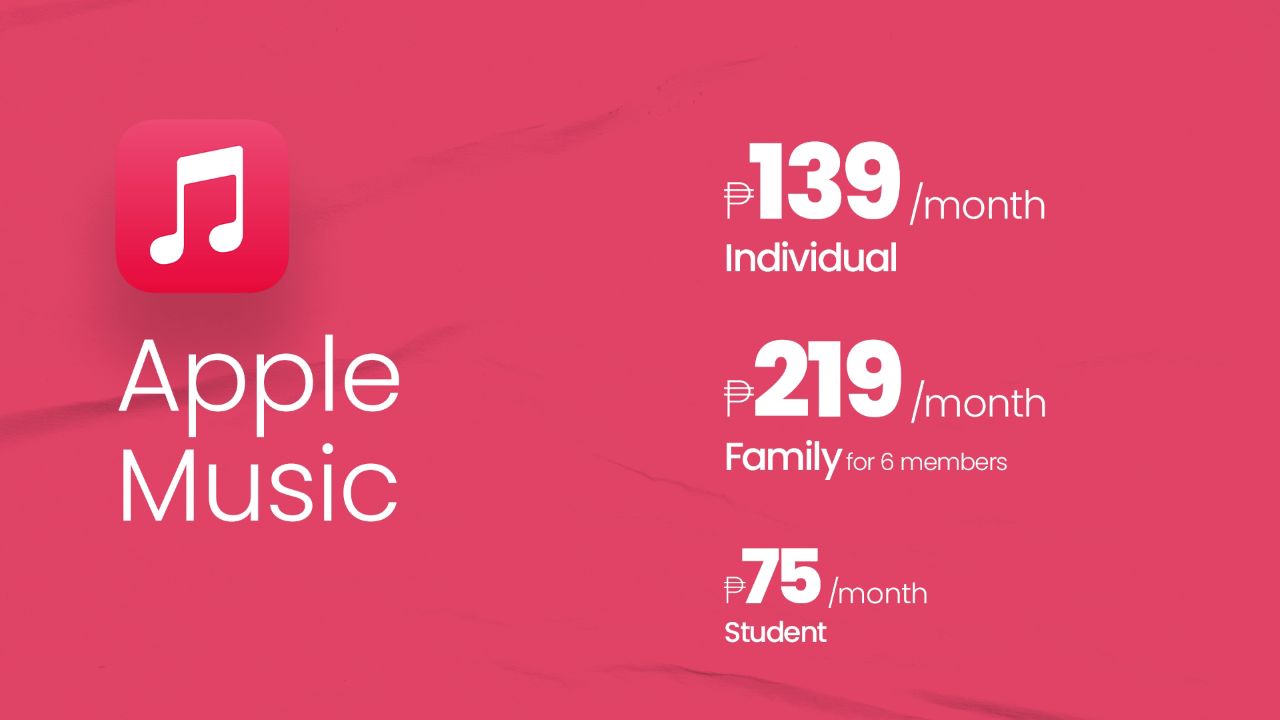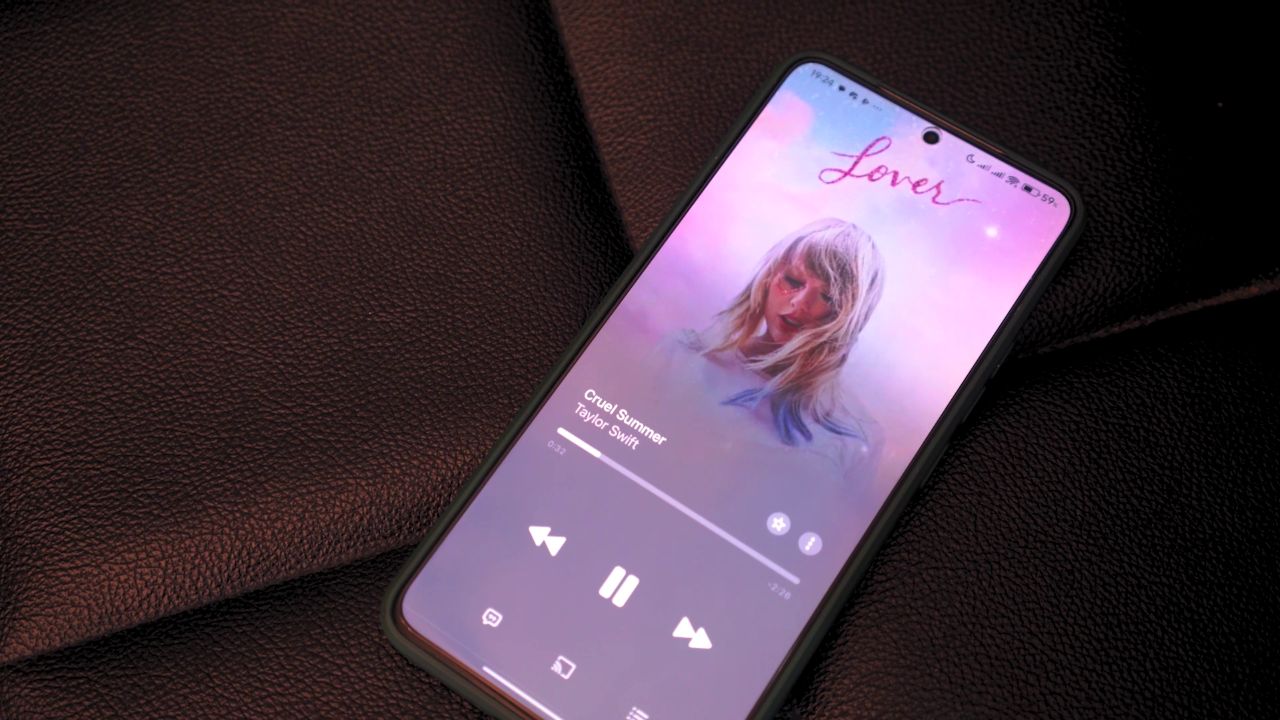
Upgrade to High-Speed Internet for only ₱1499/month!
Enjoy up to 100 Mbps fiber broadband, perfect for browsing, streaming, and gaming.
Visit Suniway.ph to learn
So, Spotify Premium just had a significant price hike globally, including the Philippines. So, we thought, maybe it’s time to revisit a comparison across the three most popular music streaming services available today.

With all the prices constantly increasing, and not to mention… the 12% value-added tax for digital goods in the Philippine), which one is worth spending your cash on? Let’s have a quick rundown of the pros and cons in this 2025 three-way comparison between Apple Music, Spotify Premium, and YouTube Music.
Overview: Plans and pricing
Before anything else, let’s take a look at the plans and pricing from all three services.

Spotify Premium
- PHP 169/ month – Individual
- PHP 229/ month – Duo
- PHP 279/ month – Family (up to 6 accounts)
- PHP 85/ month – Student
Apple Music
- PHP 139/ month – Individual
- PHP 219/ month – Family (up to 6 accounts)
- PHP 75/ month – Student
YouTube Premium
- PHP 189/ month – Individual
- PHP 379/ month – Family
- PHP 115/ month – Student
YouTube Music Premium
- PHP 149/ month – Individual
- PHP 239/ month – Family
- PHP 75/ month – Student
As you can see, only Apple Music has not increased their prices just yet (as of writing this article). Their last price hike was back in 2022, adjusting the Individual and Family plan prices to Php139 and Php219 per month, respectively (a Php10 price increase).

Notably, Apple Music is now the cheapest of the three.
Meanwhile, Spotify Premium just had its latest price hike in early August 2025. Its Individual price is now Php169 per month and its Family plan goes for Php279 per month.

Now, YouTube Music— or should I say, YouTube Premium— is the most expensive out of the bunch and there’s a reason behind it. It has a starting price of Php189 per month for Individual plan, and the price goes up to Php379 per month for Family plan.

But hey, if you just want YouTube Music alone, without the YouTube Premium thing (for some reason), then you also have the option to subscribe to “Music Premium”. It’s a lot cheaper than YouTube Premium, starting at Php149 a month for Individual and Php239 a month for the Family plan.
And with that out of the way, let’s start with Apple Music.
Apple Music: The Pros
Probably, the best features Apple Music has to offer, that other streaming services don’t have, are two things: Lossless audio and Dolby Atmos.

These essentially provide better audio fidelity, providing much more detail from the songs you listen to. But of course, to maximize such features, you may need to pair it with a device or equipment with high quality audio.
Best of all, Lossless audio and Dolby Atmos are included to any Apple Music subscription at no additional cost(!) So, that’s a really neat advantage I would say.

Apart from better sound quality, the UI looks better overall in my opinion, especially on iOS. The animated album art from certain tracks look sick, and the lyrics has far more aesthetic into it. You can appreciate the lyrics that get highlighted word by word and per syllable.

Speaking of the lyrics, Apple Music also has this karaoke feature that a lot of my Filipino folks out there might be into. This feature lets you remove the vocals from a song. Though it doesn’t remove the vocals entirely, it’s quiet enough to be in karaoke style. There’s even a slider to adjust the amount of vocals you hear.
Apple Music: The Cons
Now, let’s talk about the cons.
As a service provided by Apple, as expected, the app tends to work better with Apple devices. Features like the karaoke and some sleek animations seem to be missing on the Android version.

The song recommendations could do some improvements. Say, I play a song from a certain artist, the autoplay queue will just show similar songs and doesn’t seem to add songs from the same artist. That kind of annoys me.
The last major disadvantage of Apple Music isn’t really something significant for the most of you, but it matters more to me personally. So, I’m gonna say it anyways: Apple Music Replay isn’t as good as Spotify Wrapped.

While you can appreciate the more granular breakdown of your listening habits on a weekly or a monthly basis through Replay, it’s something that Spotify does better and kind of worse at the same time. That’s what we’re talking about next.
Spotify Premium: The Pros
Spotify Wrapped is actually one of the pros that you’d get from Spotify Premium. It’s honestly what’s keeping me from switching any time soon.

There’s a lot of hype around it, and it has been one of the most anticipated year-end events when it comes to pop culture— at least for those chronically online peeps. (Ha! I see you.)

Spotify does its Wrapped better probably because it’s also a marketing success. Lots of people share their Wrapped, tons of engagements come in, and it’s basically stonks for Spotify.
Where it does worse is: it’s not as data-driven as Apple Music. Spotify Wrapped covers the entire year, instead of the monthly and weekly recap, so there’s a little less insight to get from it.
But enough of that, let’s move on to the other pros.
Spotify is a lot better in terms of quality-of-life features. The autoplay feature actually plays songs from the same artists, and there’s even smart shuffle for your playlists that adds a few other songs that might suit your taste.

Its algorithm for recommendations is just far better. Spotify also has this AI DJ feature, so if you’re quite being lazy finding what songs to play, just hit Spotify DJ and it works like a charm.

Of course, there is Spotify Connect, which lets you remotely control your music playback from different devices, as long as Spotify is installed and they are connected to the internet.

This also means that Spotify works flawlessly with every platform, whether you’re using iOS, Android, PC, or Mac, you get the same Spotify experience. This also leads to a better network since Spotify technically has more users globally. Therefore, it’s more convenient for users to share their very own playlists to each other or publicly.
Spotify Premium: The Cons
The very first con for Spotify is the lack of higher audio quality streaming. There’s no Lossless audio available nor Dolby Atmos.
They were rumored to add a new “Music Pro” plan for such high-quality audio, but that’s just still just a rumor, at least for now. That said, it is potentially another disadvantage for Spotify since it will likely have an additional cost.

Another cons I can think of is the UI design. It’s still a bit cluttered ever since they added podcasts into the mix. It’s a bit better now, especially with the simple tab categorization, but it doesn’t have that polish as compared to Apple Music.
But that’s about it for Spotify’s disadvantages.
YouTube Premium: The Pros
Lastly, we have YouTube Premium and on paper, it is indeed the most expensive and the most value-packed at the same time. That is because YouTube Music, without the ads, is a nice inclusion with YouTube Premium. In other words, you’re getting two Premium services in just one subscription.

No ads on your YouTube playback, and you have access to ad-free music streaming simultaneously. That’s essentially the main selling point of YouTube Premium.

With that, you can also see your Liked content from YouTube synced to your YouTube Music library as long as they’re music related. This also means that official music videos, YouTube playlists, even those lo-fi videos, Wish 107.5 performances, song covers, you name it— they’re all accessible within YouTube Music.

Interestingly, YouTube Music also lets users comment on each song or content whenever possible. This certainly adds some level of engagement across different users globally, just like what YouTube itself is intended for.

The platform does have a slightly better algorithm because of that cross-platform integration. However, because of that, it suggests or auto-play content that are most likely not my cup of tea. That is one of its disadvantages actually, so let’s talk about that.
YouTube Premium: The Cons
Since YouTube Music has different sources of content thanks to YouTube, I noticed that my recommendations could easily get cluttered with content that I might like less including those I’m unfamiliar with.
There’s this toggle to categorize your autoplay suggestions, but it doesn’t really work all the time. Not to mention, music videos usually show up in autoplay tab, making the listening experience a little less favorable.

So, unless you actively organize and select the songs you play, YouTube Music should still do a decent job of recommending songs for you.
Another con I can think of is subjectively, a worse UI design. It’s serviceable by all means, but for the most part, it lacks that flair, the aesthetic that Apple Music and Spotify have.

It’s trying to be as familiar as possible, adopting similar design cues from YouTube itself— I get it. But, this is a separate app we’re talking about, and it needs something to stand out with some more polishing I guess.
Perhaps another major disadvantage is, still, the lack of higher quality sound. No lossless audio, no Dolby Atmos, none of that.
Verdict
Alright, here’s the bottom line: if sound quality is your top priority and you’re already deep into the Apple ecosystem, then Apple Music is an easy pick.

You get lossless audio, Dolby Atmos, sleek UI design, and that karaoke feature is something that’s gonna be useful in the long run. Plus, it’s still the cheapest among the three.
But if you’re more into smart recommendations, playlist curation, and you live for the year-end hype of Spotify Wrapped (don’t lie, we all post about it), then Spotify Premium might be worth the few extra pesos.

It works smoothly on all platforms and offers all the nifty quality of life features that the other two services currently lack.
Now, if you’re the type who’s on YouTube 24/7, watching music videos, tuning in to lo-fi beats, or some nice song covers out there, then YouTube Premium might actually make the most sense.

You’re not just paying for music; you’re paying for a full ad-free YouTube experience. It’s a bit more expensive, sure, but it’s technically a two-for-one deal. And if ever you just want to have ad-free YouTube Music, then that’s also a nice choice.
But what about you? Are you already using any of these streaming services? How is your experience so far? Share your thoughts in the comments below!

 2 months ago
26
2 months ago
26



